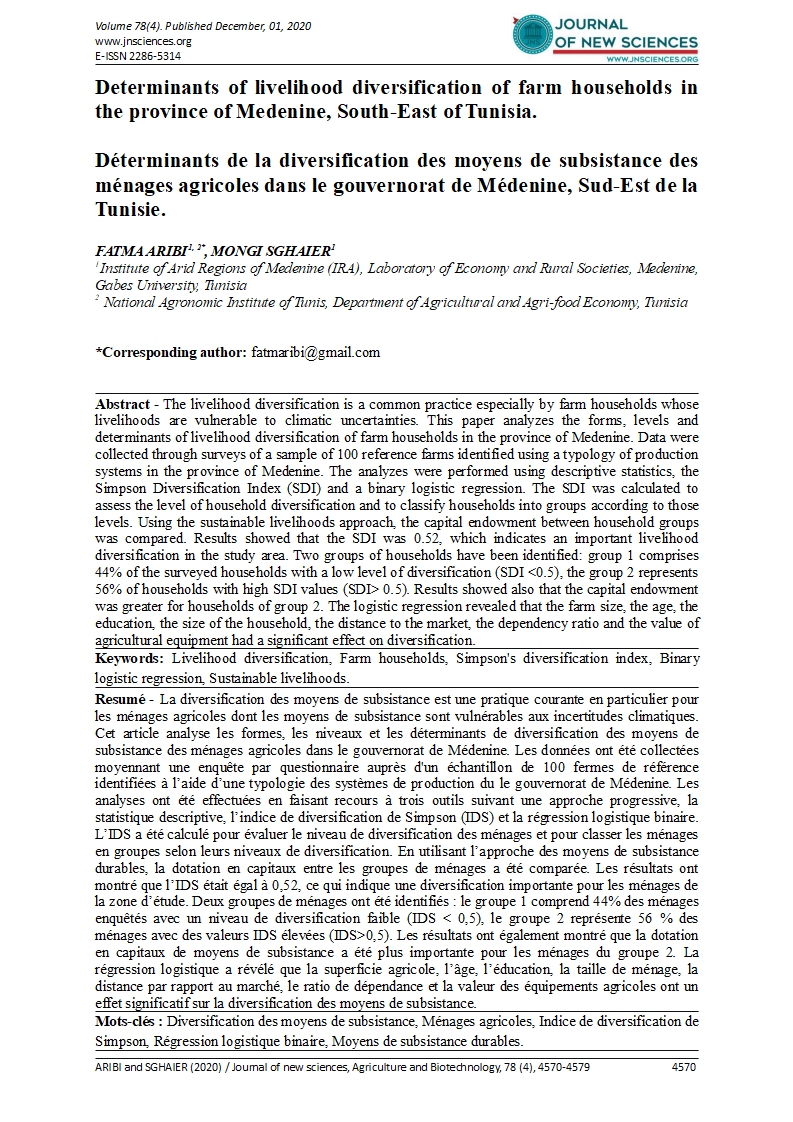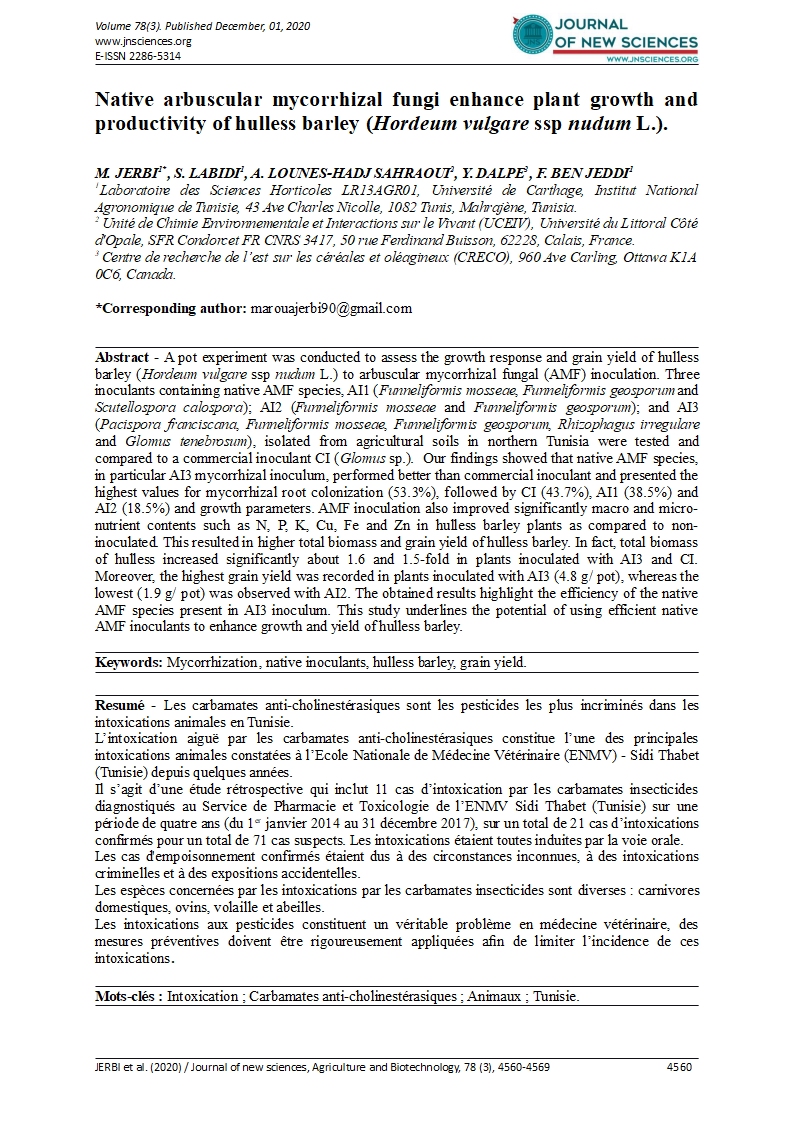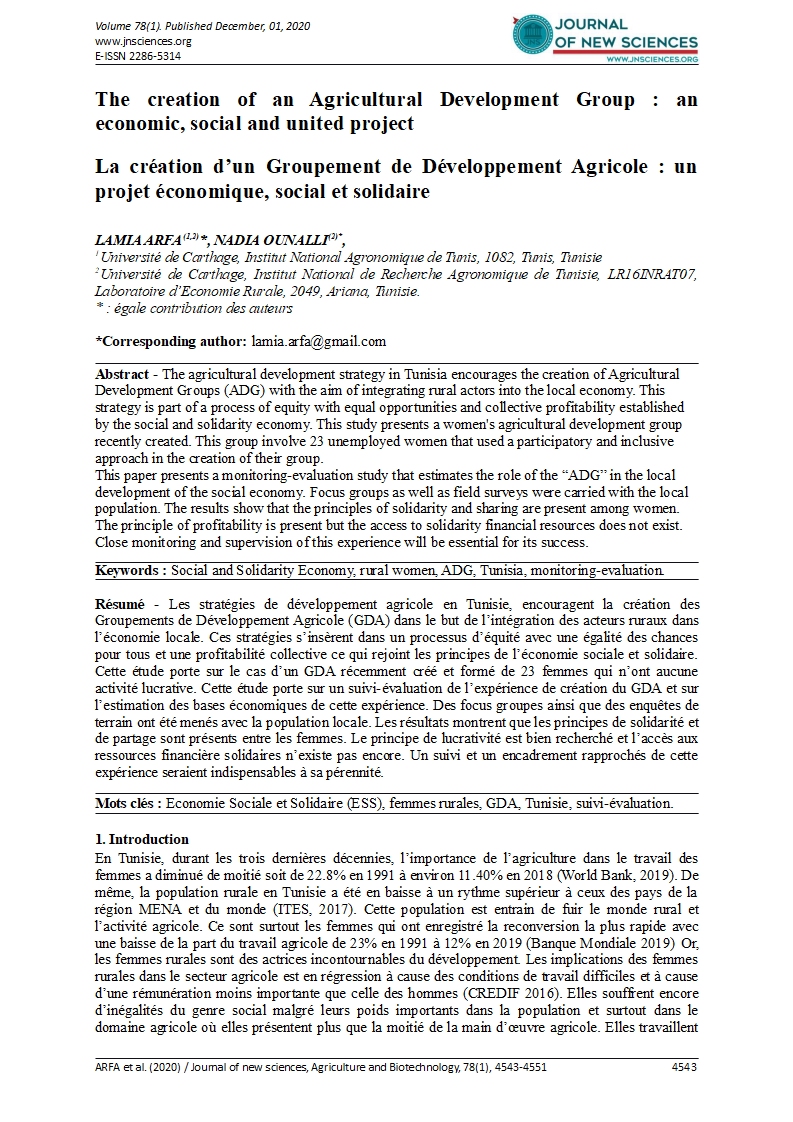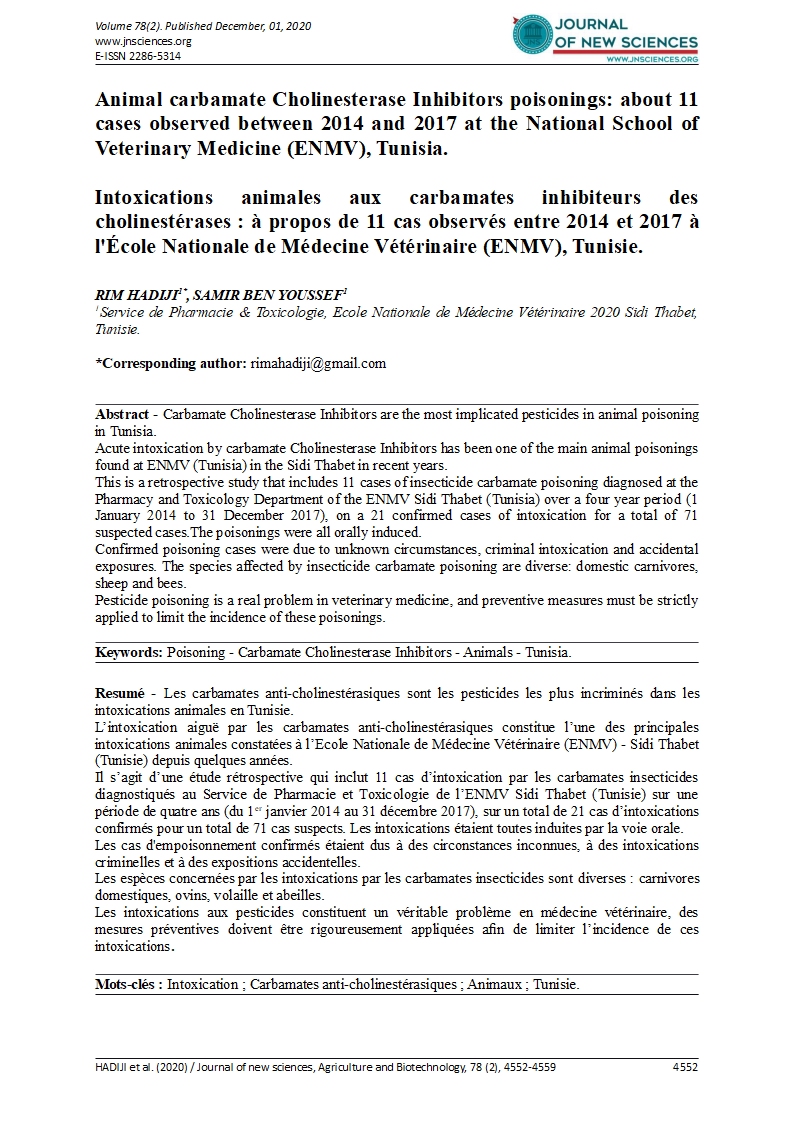- Category: Volume 78
- Hits: 2512
Determinants of livelihood diversification of farm households in the province of Medenine, South-East of Tunisia.

Déterminants de la diversification des moyens de subsistance des ménages agricoles dans le gouvernorat de Médenine, Sud-Est de la Tunisie.
FATMA ARIBI1, 2
MONGI SGHAIER1
1Institute of Arid Regions of Medenine (IRA), Laboratory of Economy and Rural Societies, Medenine, Gabes University, Tunisia
2 National Agronomic Institute of Tunis, Department of Agricultural and Agri-food Economy, Tunisia
Abstract - The livelihood diversification is a common practice especially by farm households whose livelihoods are vulnerable to climatic uncertainties. This paper analyzes the forms, levels and determinants of livelihood diversification of farm households in the province of Medenine. Data were collected through surveys of a sample of 100 reference farms identified using a typology of production systems in the province of Medenine. The analyzes were performed using descriptive statistics, the Simpson Diversification Index (SDI) and a binary logistic regression. The SDI was calculated to assess the level of household diversification and to classify households into groups according to those levels. Using the sustainable livelihoods approach, the capital endowment between household groups was compared. Results showed that the SDI was 0.52, which indicates an important livelihood diversification in the study area. Two groups of households have been identified: group 1 comprises 44% of the surveyed households with a low level of diversification (SDI <0.5), the group 2 represents 56% of households with high SDI values (SDI> 0.5). Results showed also that the capital endowment was greater for households of group 2. The logistic regression revealed that the farm size, the age, the education, the size of the household, the distance to the market, the dependency ratio and the value of agricultural equipment had a significant effect on diversification.
Keywords: Livelihood diversification, Farm households, Simpson's diversification index, Binary logistic regression, Sustainable livelihoods.



